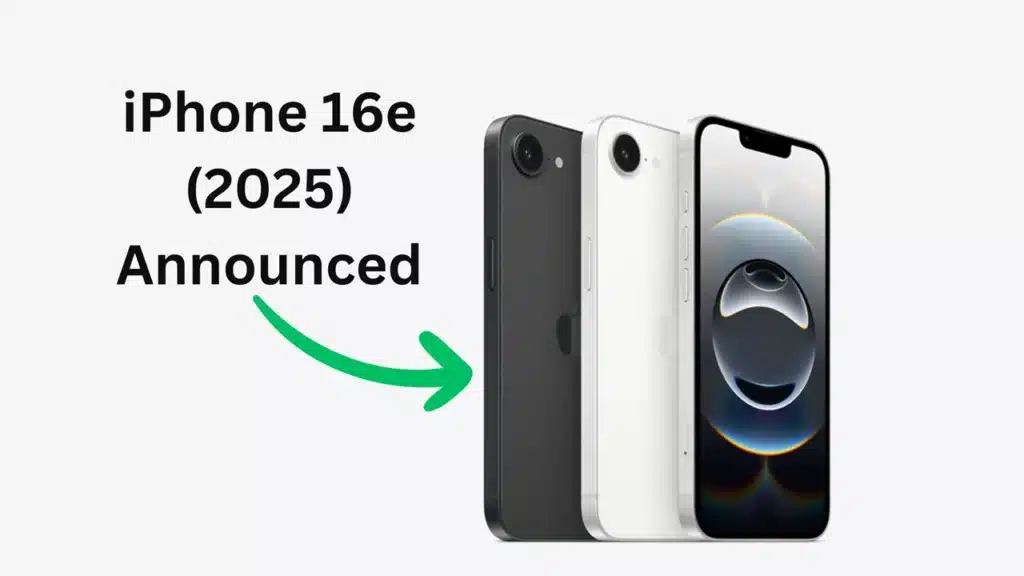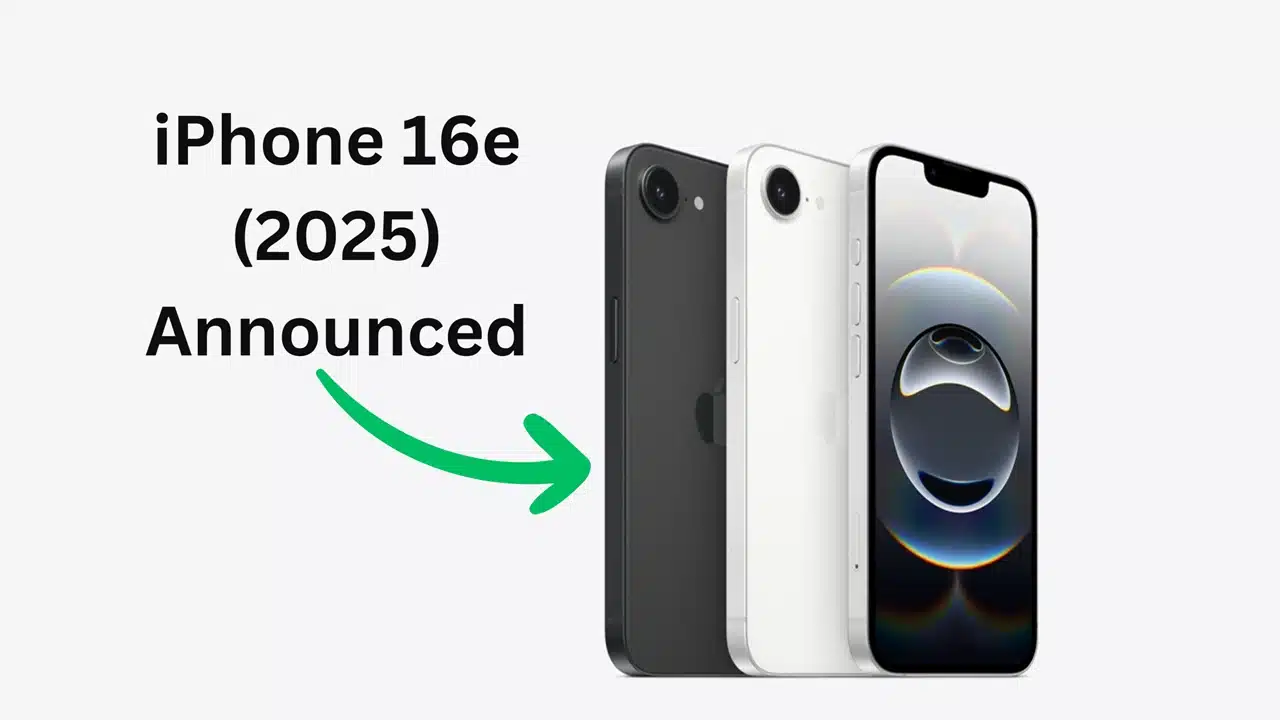Apple has officially unveiled the iPhone 16e — a device that aims to bridge the gap between affordability and modern iPhone technology. However, with a starting price of $599 / AU$999, it’s clear that “cheap” is a relative term, as this new model is $170 more expensive than its predecessor, the iPhone SE 2022.
So, what exactly does the iPhone 16e bring to the table? In this article, we’ll break down everything you need to know — from its design and camera upgrades to its performance, Apple Intelligence features, and whether its price tag is truly justified.

📱iPhone 16e: Specifications
| Feature | Details |
|---|---|
| Starting Price | $599 / AU$999 |
| Display | 6.1-inch OLED (2532 x 1170) |
| Refresh Rate | 60Hz |
| Rear Cameras | 48MP main with 2x in-sensor zoom (f/1.6) |
| Front Camera | 12MP (f/1.9) |
| Chipset | A18 |
| Storage | 128GB, 256GB, 512GB |
| Battery Life | Up to 12 hours longer than iPhone SE 3 |
| Charging | USB-C, 20W wired, 15W wireless |
| Operating System | iOS 18 |
| Water/Dust Resistance | IP68 |
| Size | 5.78 x 2.82 x 0.31 inches |
| Weight | 5.88 ounces |
| Colors | Black, white |
💰iPhone 16e: Price and Availability
The iPhone 16e is available for pre-order starting February 21, with the official release date set for February 28. The base model starts at 128GB of storage — double the iPhone SE 2022 — with options for 256GB and 512GB. Here’s the price breakdown:
- 128GB: $599 / AU$999
- 256GB: $699 / AU$1,199
- 512GB: $799 / AU$1,399
While the expanded storage options are a welcome upgrade, the sharp price increase may push budget-conscious buyers to think twice.
🎨iPhone 16e: Design and Display
Gone is the familiar 4.7-inch LCD display and Home button of the SE series. The iPhone 16e now sports a 6.1-inch OLED display (2532 x 1170 resolution), aligning it more closely with the standard iPhone 16 design.
Key design changes include:
- Face ID and notch: Say goodbye to Touch ID — the iconic Home button is gone, replaced by Face ID.
- Action button: The iPhone 16e inherits the Action button from its pricier counterparts, letting users set custom shortcuts like launching the camera, activating a flashlight, or opening apps with a quick press.
- No Dynamic Island: Unlike the Pro models, the 16e skips out on the Dynamic Island feature, keeping costs slightly lower.
Apple offers the iPhone 16e in two minimalist colors:
- Black
- White
The phone measures 5.78 x 2.82 x 0.31 inches and weighs 5.88 ounces — a noticeable shift from the compact, lightweight feel of the SE models.
📸iPhone 16e: Cameras
Photography takes a leap forward with the iPhone 16e’s 48MP rear camera — a major upgrade from the 12MP lens found in the SE 2022. The camera also offers 2x in-sensor zoom for sharper distant shots, though it lacks an ultrawide lens or telephoto camera.
Other camera features include:
- Night mode and Portrait mode: Improve low-light and depth-based photography.
- 12MP front camera (up from 7MP on the SE 3): Better selfies and FaceTime clarity.
- No Spatial video or macro capabilities: Features reserved for the Pro models.
While the camera setup may not satisfy professional photographers, it’s a solid step up for casual users upgrading from older models.
🚀iPhone 16e: Performance
Under the hood, the A18 chip powers the iPhone 16e — the same processor found in the standard iPhone 16. According to Apple, this means an 80% faster CPU compared to the A13 Bionic in the iPhone 11.
Notable performance highlights:
- 4-core GPU: Handles graphically demanding apps and mobile gaming with ease.
- 16-core Neural Engine: Powers Apple Intelligence features like AI-driven text summarization and smart photo editing.
- C1 5G modem: Apple’s first in-house modem, optimized for battery efficiency (though mmWave support appears to be missing).
Expect buttery smooth multitasking and next-level gaming experiences, with the A18 chip ensuring the iPhone 16e remains future-proof for years to come.
Also Read: Apple’s iPhone 16e: New C1 Modem Could Be a Game-Changer
🧠iPhone 16e: Apple Intelligence and iOS 18
The iPhone 16e runs on iOS 18 and introduces Apple Intelligence to a more affordable iPhone tier.
Key AI features include:
- Text and notification summarization: Quickly review long messages or email chains.
- Smart Siri: A more intuitive voice assistant that understands complex requests.
- Visual Intelligence: Identify objects, animals, or landmarks through the camera — accessed via the Action button.
- Customizable home screen and Control Center: Personalize your phone’s interface like never before.
While some features like Visual Intelligence are streamlined for the iPhone 16e, the phone still delivers a robust AI experience without needing to shell out for a premium model.
🔋iPhone 16e: Battery and Charging
The iPhone 16e benefits from a larger battery — Apple claims it lasts up to 12 hours longer than the iPhone SE 3 and 6 hours longer than the iPhone 11.
Charging details:
- 20W wired charging (USB-C port, replacing Lightning).
- 15W wireless charging (though MagSafe support is absent).
- No fast charging beyond 20W — a small drawback for those hoping for Pro-level charging speeds.
Apple’s move to USB-C is a step toward standardization, but the absence of MagSafe may disappoint users invested in Apple’s wireless accessory ecosystem.
✅Conclusion: Is the iPhone 16e Worth It?
The iPhone 16e brings a lot to the table: a modern design, a powerful A18 chip, a 48MP camera, and Apple Intelligence — all in a more affordable package compared to the iPhone 16 lineup.
However, the $599 starting price may alienate budget-conscious buyers. While it’s a huge improvement over the iPhone SE 3, the 16e’s price puts it dangerously close to rival phones like the Google Pixel 8a — which offers a strong camera system and AI tools at a lower cost.
Ultimately, the iPhone 16e seems perfect for those who want the latest Apple tech without going Pro — but it’s far from the budget-friendly successor many hoped for.
Also Read: Why Is The iPhone 16e So Expensive?
